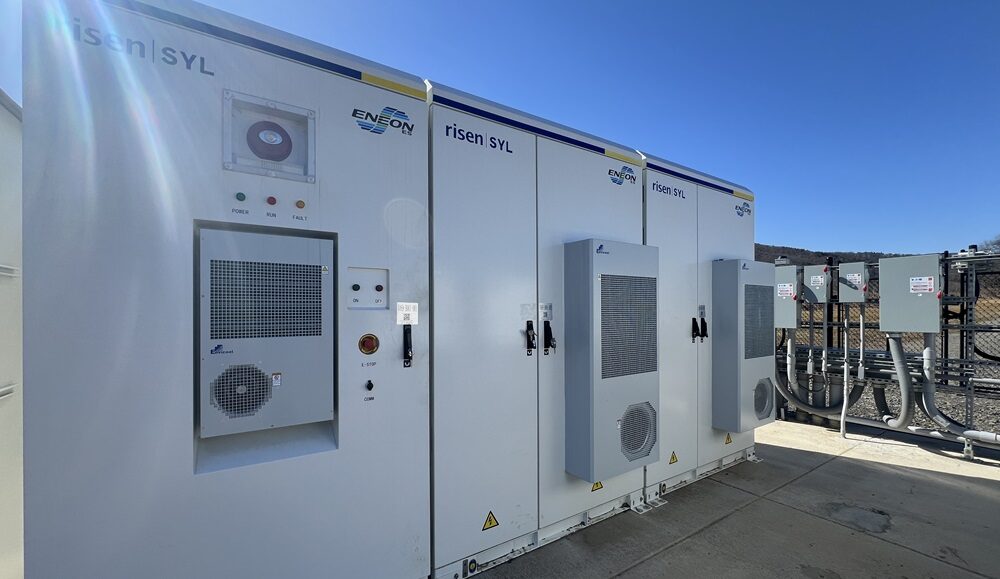Germany-based Heliatek has announced the first product of its new series of lightweight organic PV (OPV) modules made for low-load-bearing rooftops.
Dubbed Heliasol 436-2000-CFE-45-600V, the series is IEC 61215 and IEC 61730 compliant and features a 20-year lifetime warranty.
Suited for rooftops or facades that require a lightweight PV solution, the product has a 45 W power output, measures 2,000 mm x 486 mm x 1.8 mm, and weighs 2 kg/m2. “It is certified for string voltages up to 600 V, which will be further increased in the next members of the new product line,” Heliatek CEO, Guido van Tartwijk, told pv magazine.
Mounting can be carried out via a self-adhesive tape affixed to the outermost rear surface. “The back-side adhesive works on a wide variety of underground materials, such as glass, metal, fiber cement, and most membranes. For certain types of underground, a commercially available primer is delivered with the product for optimum adhesion,” said van Tartwijk. The adhesive also has a 20-year lifetime.
The minimum bending radius is 50 cm with a temperature coefficient of 0.00 %/C from 25 C up to 65 C, and an IP 67 enclosure. It is based on triple-junction OPV cells in serial connection, a polymer front-side cover with a matt finish, and a black-colored backsheet, also polymer-based. Both front and back covers have ultraviolet light and weather protection, according to the manufacturer.
“No rare earths or any other scarce materials are used, making the supply chain robust against geopolitical dynamics,” said van Tartwijk.
The current aperture efficiency is in the 7.5% to 8.5% range, with higher efficiencies in the lab, according to Tartwijk. “Our development program therefore focuses not only on increasing the lab efficiency, which as a theoretical limit is more than 49%, but also on reducing the lab-to-fab losses that are inherent to any technology,” he said.
Heliatek has invested $80 million in developing its 5000 m2 factory in Germany. “We have a roll-to-roll-in-vacuum in-line process. All equipment was developed with reputable equipment building companies, often in a bespoke form. The factory is the first of a kind and designed for low-labor production,” van Tartwijk explained.
The plant has an annual capacity of 0.25 GW. “This is not much for a traditional PV plant, but it is the first step for Heliatek's technology. The market of low-static buildings is gigantic, and is estimated to be in the range of at least 400 million square meters in Europe alone,” said van Tartwijk. “The first Heliatek plant would require decades to supply such quantities, so obviously we need more and higher capacity lines.”
pv magazine
With a team in place for direct sales in the Swiss, Austrian, and German markets, along with a network of installers and distributors, new partners are being sourced for South Africa, Brazil, and Eastern Europe markets.
Value-added resellers are in place in the Middle East, Turkey, Singapore, Korea and Japan. As for the United States, Heliatek will address the market once it has the required certifications.
“The oldest modules have been in the field since 2012,” stated van Tartwijk, adding that customers report generating more energy than expected as production starts earlier and stops later compared to conventional PV modules. Another reported advantage, is that productivity is the same at 25 C as at 85 C.
The Heliatek executive also pointed out that its products have a TÜV Rheinland-certified carbon footprint of 14.52 kg CO2-equivalent per square meter, which translates to a hard-to-beat carbon payback time.
This content is protected by copyright and may not be reused. If you want to cooperate with us and would like to reuse some of our content, please contact: editors@pv-magazine.com.



By submitting this form you agree to pv magazine using your data for the purposes of publishing your comment.
Your personal data will only be disclosed or otherwise transmitted to third parties for the purposes of spam filtering or if this is necessary for technical maintenance of the website. Any other transfer to third parties will not take place unless this is justified on the basis of applicable data protection regulations or if pv magazine is legally obliged to do so.
You may revoke this consent at any time with effect for the future, in which case your personal data will be deleted immediately. Otherwise, your data will be deleted if pv magazine has processed your request or the purpose of data storage is fulfilled.
Further information on data privacy can be found in our Data Protection Policy.